How to write by Stephen King
In our final extract from his new book, On Writing, Stephen King reveals six key rules for writing a bestseller. Take note, as this is your chance to have a story published in the paperback version and to meet the master storyteller himself
- The basics: forget plot, but remember the importance of ‘situation’
I won’t try to convince you that I’ve never plotted any more than I’d try to convince you that I’ve never told a lie, but I do both as infrequently as possible. I distrust plot for two reasons: first, because our lives are largely plotless, even when you add in all our reasonable precautions and careful planning; and second, because I believe plotting and the spontaneity of real creation aren’t compatible.
A strong enough situation renders the whole question of plot moot. The most interesting situations can usually be expressed as a What-if question:
What if vampires invaded a small New England village? (Salem’s Lot).
What if a young mother and her son became trapped in their stalled car by a rabid dog? (Cujo).
These were situations which occurred to me – while showering, while driving, while taking my daily walk – and which I eventually turned into books. In no case were they plotted, not even to the extent of a single note jotted on a single piece of scrap paper.
- Similes and metaphors – the rights, the wrongs
When a simile or metaphor doesn’t work, the results are sometimes funny and sometimes embarrassing. Recently, I read this sentence in a forthcoming novel I prefer not to name: ‘He sat stolidly beside the corpse, waiting for the medical examiner as patiently as a man waiting for a turkey sandwich.’ If there is a clarifying connection here, I wasn’t able to make it.
My all-time favourite similes come from the hard-boiled-detective fiction of the 40s and 50s, and the literary descendants of the dime-dreadful writers. These favourites include ‘It was darker than a carload of assholes’ (George V Higgins) and ‘I lit a cigarette [that] tasted like a plumber’s handkerchief’ (Raymond Chandler).
- Dialogue: talk is ‘sneaky’
It’s dialogue that gives your cast their voices, and is crucial in defining their characters – only what people do tells us more about what they’re like, and talk is sneaky: what people say often conveys their character to others in ways of which they – the speakers – are completely unaware.
Advertisement
Well-crafted dialogue will indicate if a character is smart or dumb, honest or dishonest, amusing or an old sobersides. Good dialogue, such as that written by George V Higgins, Peter Straub or Graham Greene, is a delight to read; bad dialogue is deadly.
- Characters: nobody is the ‘bad-guy’
The job boils down to two things: paying attention to how the real people around you behave and then telling the truth about what you see. It’s also important to remember that no one is ‘the bad guy’ or ‘the best friend’ or ‘the whore with a heart of gold’ in real life; in real life we each of us regard ourselves as the main character, the protagonist, the big cheese; the camera is on us , baby. If you can bring this attitude into your fiction, you may not find it easier to create brilliant characters, but it will be harder for you to create the sort of one-dimensional dopes that populate so much pop fiction.
- Pace: fast is not always best
Pace is the speed at which your narrative unfolds. There is a kind of unspoken (hence undefended and unexamined) belief in publishing circles that the most commercially successful stories and novels are fast-paced. Like so many unexamined beliefs in the publishing business, this idea is largely bullshit… which is why, when books like Umberto Eco’s The Name of the Rose suddenly break out of the pack and climb the bestseller lists, publishers and editors are astonished. I suspect that most of them ascribe these books’ unexpected success to unpredictable and deplorable lapses into good taste on the part of the reading public.
I believe each story should be allowed to unfold at its own pace, and that pace is not always double time. Nevertheless, you need to beware – if you slow the pace down too much, even the most patient reader is apt to grow restive.
- Do the research, but don’t overdo it for the reader
You may be entranced with what you’re learning about flesh-eating bacteria, the sewer system of New York, or the IQ potential of Collie pups, but your readers are probably going to care a lot more about your characters and your story.
Exceptions to the rule? Sure, aren’t there always? There have been very successful writers – Arthur Hailey and James Michener are the first ones that come to my mind – whose novels rely heavily on fact and research. Other popular writers, such as Tom Clancy and Patricia Cornwell, are more story-oriented, but still deliver large dollops of factual information along with the melodrama. I sometimes think that these writers appeal to a large segment of the reading population who feel that fiction is somehow immoral, a low taste which can only be justified by saying, ‘Well, ahem, yes, I do read [fill in author’s name here], but only on airplanes and in hotel rooms that don’t have CNN; also, I learned a great deal about [fill in appropriate subject here].’
The Observer
Writing Advice: by Chuck Palahniuk
In six seconds, you’ll hate me.
But in six months, you’ll be a better writer.
From this point forward—at least for the next half year—you may not use “thought” verbs. These include: Thinks, Knows, Understands, Realizes, Believes, Wants, Remembers, Imagines, Desires, and a hundred others you love to use.
The list should also include: Loves and Hates.
And it should include: Is and Has, but we’ll get to those later.
Until some time around Christmas, you can’t write: Kenny wondered if Monica didn’t like him going out at night…”
Instead, you’ll have to Un-pack that to something like: “The
mornings after Kenny had stayed out, beyond the last bus, until he’d had to bum a ride or pay for a cab and got home to find Monica faking sleep, faking because she never slept that quiet, those mornings, she’d only put her own cup of coffee in the microwave. Never his.”
Instead of characters knowing anything, you must now present the details that allow the reader to know them. Instead of a character wanting something, you must now describe the thing so that the reader wants it.
Instead of saying: “Adam knew Gwen liked him.” You’ll have to say: “Between classes, Gwen had always leaned on his locker when he’d go to open it. She’s roll her eyes and shove off with one foot, leaving a black-heel mark on the painted metal, but she also left the smell of her perfume. The combination lock would still be warm from her butt. And the next break, Gwen would be leaned there, again.”
In short, no more short-cuts. Only specific sensory detail: action, smell, taste, sound, and feeling.
Typically, writers use these “thought” verbs at the beginning of a paragraph (In this form, you can call them “Thesis Statements” and I’ll rail against those, later). In a way, they state the intention of the paragraph. And what follows, illustrates them.
For example:
“Brenda knew she’d never make the deadline. was backed up from the bridge, past the first eight or nine exits. Her cell phone battery was dead. At home, the dogs would need to go out, or there would be a mess to clean up. Plus, she’d promised to water the plants for her neighbor…”
Do you see how the opening “thesis statement” steals the thunder of what follows? Don’t do it.
If nothing else, cut the opening sentence and place it after all the others. Better yet, transplant it and change it to: Brenda would never make the deadline.
Thinking is abstract. Knowing and believing are intangible. Your story will always be stronger if you just show the physical actions and details of your characters and allow your reader to do the thinking and knowing. And loving and hating.
Don’t tell your reader: “Lisa hated Tom.”
Instead, make your case like a lawyer in court, detail by detail.
Present each piece of evidence. For example: “During roll call, in the breath after the teacher said Tom’s name, in that moment before he could answer, right then, Lisa would whisper-shout ‘Butt Wipe,’ just as Tom was saying, ‘Here’.”
One of the most-common mistakes that beginning writers make is leaving their characters alone. Writing, you may be alone. Reading, your audience may be alone. But your character should spend very, very little time alone. Because a solitary character starts thinking or worrying or wondering.
For example: Waiting for the bus, Mark started to worry about how long the trip would take…”
A better break-down might be: “The schedule said the bus would come by at noon, but Mark’s watch said it was already 11:57. You could see all the way down the road, as far as the Mall, and not see a bus. No doubt, the driver was parked at the turn-around, the far end of the line, taking a nap. The driver was kicked back, asleep, and Mark was going to be late. Or worse, the driver was drinking, and he’d pull up drunk and charge Mark seventy-five cents for death in a fiery traffic accident…”
A character alone must lapse into fantasy or memory, but even then you can’t use “thought” verbs or any of their abstract relatives.
Oh, and you can just forget about using the verbs forget and remember.
No more transitions such as: “Wanda remembered how Nelson used to brush her hair.”
Instead: “Back in their sophomore year, Nelson used to brush her hair with smooth, long strokes of his hand.”
Again, Un-pack. Don’t take short-cuts.
Better yet, get your character with another character, fast.
Get them together and get the action started. Let their actions and words show their thoughts. You—stay out of their heads.
And while you’re avoiding “thought” verbs, be very wary about using the bland verbs “is” and “have.”
For example:
“Ann’s eyes are blue.”
“Ann has blue eyes.”
Versus:
“Ann coughed and waved one hand past her face, clearing the cigarette smoke from her eyes, blue eyes, before she smiled…”
Instead of bland “is” and “has” statements, try burying your details of what a character has or is, in actions or gestures. At its most basic, this is showing your story instead of telling it.
And forever after, once you’ve learned to Un-pack your characters, you’ll hate the lazy writer who settles for: “Jim sat beside the telephone, wondering why Amanda didn’t call.”
Please. For now, hate me all you want, but don’t use thought verbs. After Christmas, go crazy, but I’d bet money you won’t.
(…)
For this month’s homework, pick through your writing and circle every “thought” verb. Then, find some way to eliminate it. Kill it by Un-packing it.
Then, pick through some published fiction and do the same thing. Be ruthless.
“Marty imagined fish, jumping in the moonlight…”
“Nancy recalled the way the wine tasted…”
“Larry knew he was a dead man…”
Find them. After that, find a way to re-write them. Make them stronger.
“


 To Kill a Mockingbird won the Pulitzer Prize in 1961
To Kill a Mockingbird won the Pulitzer Prize in 1961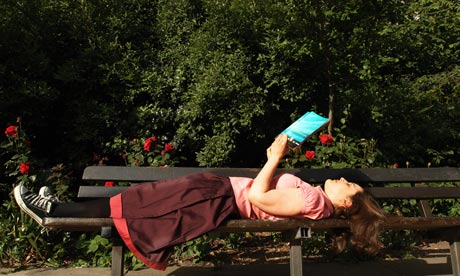
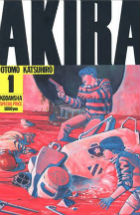 Otomo’s arresting and vivid portrayal of gang warfare on the streets of a post-apocalyptic Tokyo ran throughout the ’80s, drawing in influences from both the West (Star Wars) and the East (Japanese author Seishi Yokomizo), to dazzling effect. Widely credited with introducing both manga, and though its animated movie translation, anime, to Western audiences, Akira explores ideas of mutation, psychokinesis, military corruption and terrorism, all the while exhibiting the nuclear paranoia that flooded Japanese culture after 1945. Every Armageddon-obsessed adventure from Final Fantasy to Infamous has ideas that can be traced back here. Alternatively: Another classic 80s manga, Fist of the North Star, has been influential. And from the west, Frank Miller’s The Dark Knight Returns and Alan Moore’s Watchmen are two works dealing in similar areas of warped heroism, mutated humanity and future-noir paranoia.
Otomo’s arresting and vivid portrayal of gang warfare on the streets of a post-apocalyptic Tokyo ran throughout the ’80s, drawing in influences from both the West (Star Wars) and the East (Japanese author Seishi Yokomizo), to dazzling effect. Widely credited with introducing both manga, and though its animated movie translation, anime, to Western audiences, Akira explores ideas of mutation, psychokinesis, military corruption and terrorism, all the while exhibiting the nuclear paranoia that flooded Japanese culture after 1945. Every Armageddon-obsessed adventure from Final Fantasy to Infamous has ideas that can be traced back here. Alternatively: Another classic 80s manga, Fist of the North Star, has been influential. And from the west, Frank Miller’s The Dark Knight Returns and Alan Moore’s Watchmen are two works dealing in similar areas of warped heroism, mutated humanity and future-noir paranoia.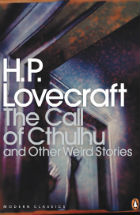 Through a selection of interconnected stories written throughout the twenties and thirties, American writer HP Lovecraft created a new horror mythology, blending the supernatural and science fiction and imagining a universe of dank oppressive dread in which humanity is at the mercy of gigantically powerful monsters. Lovecraft’s bestiary was a huge influence on the makers of seminal tabletop role-playing game, Dungeons and Dragons, thereby working its way into most video game RPGs ever since. And the Cthulhu Mythos that emerged from his works has had an enormous influence on games designers in other genres: indeed, the entire concept of ‘end of level bosses’ practically percolates Lovecraft’s entire philosophy into one game convention. Alternatively: other writers whose own complex fantasy/horror mythologies have inspired game designers include Michael Moorcock (especially the Elric books) and Stephen King (The Dark Tower). Lovecraft was also an influence on another provider of video game set texts, Robert Bloch.
Through a selection of interconnected stories written throughout the twenties and thirties, American writer HP Lovecraft created a new horror mythology, blending the supernatural and science fiction and imagining a universe of dank oppressive dread in which humanity is at the mercy of gigantically powerful monsters. Lovecraft’s bestiary was a huge influence on the makers of seminal tabletop role-playing game, Dungeons and Dragons, thereby working its way into most video game RPGs ever since. And the Cthulhu Mythos that emerged from his works has had an enormous influence on games designers in other genres: indeed, the entire concept of ‘end of level bosses’ practically percolates Lovecraft’s entire philosophy into one game convention. Alternatively: other writers whose own complex fantasy/horror mythologies have inspired game designers include Michael Moorcock (especially the Elric books) and Stephen King (The Dark Tower). Lovecraft was also an influence on another provider of video game set texts, Robert Bloch.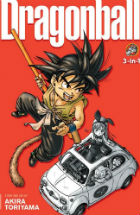 Originally serialised in the weekly Japanese comic, Shōnen Jump, Dragon Ball is widely considered to be one of the greatest mangas of all-time, its volumes selling over 230m copies worldwide. Based around the Chinese novel Journey to the West (the source for the cult TV series Monkey), the epic work combines exciting martial arts action and a Picaresque narrative heaving with eccentric and fascinating characters. There have been dozens of video game conversions of the original works, but Toriyama’s mix of combat, mythology and comedy has inspired hundreds more beat-’em-ups and action adventures. There are also dozens of games that make use of the
Originally serialised in the weekly Japanese comic, Shōnen Jump, Dragon Ball is widely considered to be one of the greatest mangas of all-time, its volumes selling over 230m copies worldwide. Based around the Chinese novel Journey to the West (the source for the cult TV series Monkey), the epic work combines exciting martial arts action and a Picaresque narrative heaving with eccentric and fascinating characters. There have been dozens of video game conversions of the original works, but Toriyama’s mix of combat, mythology and comedy has inspired hundreds more beat-’em-ups and action adventures. There are also dozens of games that make use of the 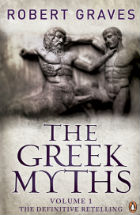 Video games are utterly crammed with conventions, ideas and archetypes ripped from world mythologies, but Ancient Greece has provided many of the key inspirations. The idea of the heroic quest, a central element in almost every role-playing game, is symbolised in the adventures of Odysseus, Perseus and Theseus, as are the underlying concepts of prophesy, destiny and of ‘the chosen one’ who is born to vanquish evil. This inspiration is obvious in titles like God of War and Altered Beast, but every time a character reaches for a magic item or feels as though they are at the mercy of vengeful gods, it is likely the source goes back to Ancient Greece. I have opted for Robert Graves’ much-respected analysis here, but there are plenty of other options, including Bullfinch’s Mythology. Alternatively: the Norse and Celtic mythologies have also been a huge influence on game designers, adding their own slants on iconic concepts such as magical items, warring gods and heroic journeys. There’s also the Bible, of course, which is filled with war, heroism and wrathful deities.
Video games are utterly crammed with conventions, ideas and archetypes ripped from world mythologies, but Ancient Greece has provided many of the key inspirations. The idea of the heroic quest, a central element in almost every role-playing game, is symbolised in the adventures of Odysseus, Perseus and Theseus, as are the underlying concepts of prophesy, destiny and of ‘the chosen one’ who is born to vanquish evil. This inspiration is obvious in titles like God of War and Altered Beast, but every time a character reaches for a magic item or feels as though they are at the mercy of vengeful gods, it is likely the source goes back to Ancient Greece. I have opted for Robert Graves’ much-respected analysis here, but there are plenty of other options, including Bullfinch’s Mythology. Alternatively: the Norse and Celtic mythologies have also been a huge influence on game designers, adding their own slants on iconic concepts such as magical items, warring gods and heroic journeys. There’s also the Bible, of course, which is filled with war, heroism and wrathful deities.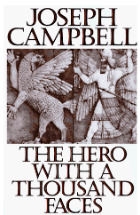 This is a slight cheat as it’s obviously not a novel, but Joseph Campbell’s exhaustive study of world mythologies and the concept of the heroic archetype has been named as an inspiration by countless developers I have spoken to over the last two decades. Campbell’s central argument, that all mythological tales spring from a single monomyth in which a hero defeats a series of challenges to attain a life-changing gift, is central to both video game and movie structure. This is the core stuff of story-telling, later refined into a writing guide by Christopher Vogler in his similarly much-cited work, The Writer’s Journey: Mythic Structure For Writers. Alternatively: Sir James George Frazer’s classic study of archetypal religious beliefs and practices, The Golden Bough, is another oft-named source for video game ideas.
This is a slight cheat as it’s obviously not a novel, but Joseph Campbell’s exhaustive study of world mythologies and the concept of the heroic archetype has been named as an inspiration by countless developers I have spoken to over the last two decades. Campbell’s central argument, that all mythological tales spring from a single monomyth in which a hero defeats a series of challenges to attain a life-changing gift, is central to both video game and movie structure. This is the core stuff of story-telling, later refined into a writing guide by Christopher Vogler in his similarly much-cited work, The Writer’s Journey: Mythic Structure For Writers. Alternatively: Sir James George Frazer’s classic study of archetypal religious beliefs and practices, The Golden Bough, is another oft-named source for video game ideas. There was a time in the early 2000s when it seemed every studio I visited had a well-thumbed copy of this challenging but fascinating novel left on a desk somewhere. Here, though, it’s as much about form as it is about content – House of Leaves is a cybertext, a work of “ergodic” literature in which the formatting of the text becomes a puzzle the reader must solve. Through footnotes, blank pages, interviews and codes, Danielewski creates a sort of dynamic experience, that reflected a lot of the experiments into interactive fiction and alternative reality gaming taking place on the web at the time. In essence its a story about how to tell stories in the digital age. Alternatively: Fictions by Jorge Luis Borges is another surreal and playful text that creates meaning in obtuse layers – it has been name-checked by many developers I’ve spoken to. A couple also mentioned Theodore Roszak’s Flicker, a slightly more conventional take on Danielewski’s use of fictionalised historical writing.
There was a time in the early 2000s when it seemed every studio I visited had a well-thumbed copy of this challenging but fascinating novel left on a desk somewhere. Here, though, it’s as much about form as it is about content – House of Leaves is a cybertext, a work of “ergodic” literature in which the formatting of the text becomes a puzzle the reader must solve. Through footnotes, blank pages, interviews and codes, Danielewski creates a sort of dynamic experience, that reflected a lot of the experiments into interactive fiction and alternative reality gaming taking place on the web at the time. In essence its a story about how to tell stories in the digital age. Alternatively: Fictions by Jorge Luis Borges is another surreal and playful text that creates meaning in obtuse layers – it has been name-checked by many developers I’ve spoken to. A couple also mentioned Theodore Roszak’s Flicker, a slightly more conventional take on Danielewski’s use of fictionalised historical writing. Published in 1885, Haggard’s colonialist romp through the deserts and mountains of Africa, brought us Allan Quartermain, the archetypal flawed adventure hero, and introduced the Lost World genre of fiction. These elements, modernised through the Indiana Jones trilogy (don’t… just don’t mention the fourth film), has gone on to inspire everything from Pitfall to Tomb Raider. Any game in which a hero and his bickering team locate a lost temple filled with fabled treasures probably has its roots in Haggard’s novel. Alternatively: Along with Robert Louis Stevenson (Treasure Island) and Edgar Rice Burroughs (Tarzan), Haggard no doubt influenced the heroic fantasy works of authors like Robert E. Howard, whose Conan books have spawned a hundred monosyllabic video game warriors as well shaping the whole sword and sorcery sub-genre.
Published in 1885, Haggard’s colonialist romp through the deserts and mountains of Africa, brought us Allan Quartermain, the archetypal flawed adventure hero, and introduced the Lost World genre of fiction. These elements, modernised through the Indiana Jones trilogy (don’t… just don’t mention the fourth film), has gone on to inspire everything from Pitfall to Tomb Raider. Any game in which a hero and his bickering team locate a lost temple filled with fabled treasures probably has its roots in Haggard’s novel. Alternatively: Along with Robert Louis Stevenson (Treasure Island) and Edgar Rice Burroughs (Tarzan), Haggard no doubt influenced the heroic fantasy works of authors like Robert E. Howard, whose Conan books have spawned a hundred monosyllabic video game warriors as well shaping the whole sword and sorcery sub-genre. Well, it had to be in here. Although Dungeons and Dragons co-creator Gary Gygax
Well, it had to be in here. Although Dungeons and Dragons co-creator Gary Gygax  Certainly not the first cyberpunk novel, but possibly the most influential. Gibson’s post-modern tale of hackers, criminal corporations and sentient AIs worked alongside Bladerunner to instil in game designers a new aesthetic of the future. No shiny spaceships and helpful robots, just noirish paranoia, busted up computer hardware, hard-drinking renegades and drugs. The anarchic, counter-culture feel of Gibson’s works appealed to the bedroom programmers of the 80s and early 90s who identified with the author’s damaged, technically brilliant protagonists, and with the assimilation of biological and computer organisms. Games like Syndicate, Beneath as Steel Sky and later Deus Ex, .hack// and Metal Gear Solid caught the vibe perfectly. Alternatively: pretty much anything by Bruce Sterling, Neal Stephenson or Pat Cadigan. And from manga, Bubblegum Crisis, Ghost in the Shell and Appleseed.
Certainly not the first cyberpunk novel, but possibly the most influential. Gibson’s post-modern tale of hackers, criminal corporations and sentient AIs worked alongside Bladerunner to instil in game designers a new aesthetic of the future. No shiny spaceships and helpful robots, just noirish paranoia, busted up computer hardware, hard-drinking renegades and drugs. The anarchic, counter-culture feel of Gibson’s works appealed to the bedroom programmers of the 80s and early 90s who identified with the author’s damaged, technically brilliant protagonists, and with the assimilation of biological and computer organisms. Games like Syndicate, Beneath as Steel Sky and later Deus Ex, .hack// and Metal Gear Solid caught the vibe perfectly. Alternatively: pretty much anything by Bruce Sterling, Neal Stephenson or Pat Cadigan. And from manga, Bubblegum Crisis, Ghost in the Shell and Appleseed. Gears of War, Halo, Killzone, Quake… all of them owe a debt to the concept of the space marine brilliantly realised in Heinlein’s future war epic. He wasn’t the first to write about the concept of a mechanised military defending humanity from invading aliens, but Heinlein captured many of the key elements that would go into the biggest sci-fi games. A troubled hero advancing through the ranks, an insect-like extra-terrestrial threat, a factional military… whatever you think about the archetypal video game space soldier, with his buzz cut, tribal tattoos and immense metallic body armour, it is one of the key images of this console generation, and his family tree goes back to this novel and its contemporaries. Alternatively: Ender’s Game by Orson Scott Card, EE Smith’s Lensman series and Iain M Banks’ Culture novels also deal with galactic war, mega weaponry and vicious aliens/AIs. And where would games be without those?
Gears of War, Halo, Killzone, Quake… all of them owe a debt to the concept of the space marine brilliantly realised in Heinlein’s future war epic. He wasn’t the first to write about the concept of a mechanised military defending humanity from invading aliens, but Heinlein captured many of the key elements that would go into the biggest sci-fi games. A troubled hero advancing through the ranks, an insect-like extra-terrestrial threat, a factional military… whatever you think about the archetypal video game space soldier, with his buzz cut, tribal tattoos and immense metallic body armour, it is one of the key images of this console generation, and his family tree goes back to this novel and its contemporaries. Alternatively: Ender’s Game by Orson Scott Card, EE Smith’s Lensman series and Iain M Banks’ Culture novels also deal with galactic war, mega weaponry and vicious aliens/AIs. And where would games be without those?